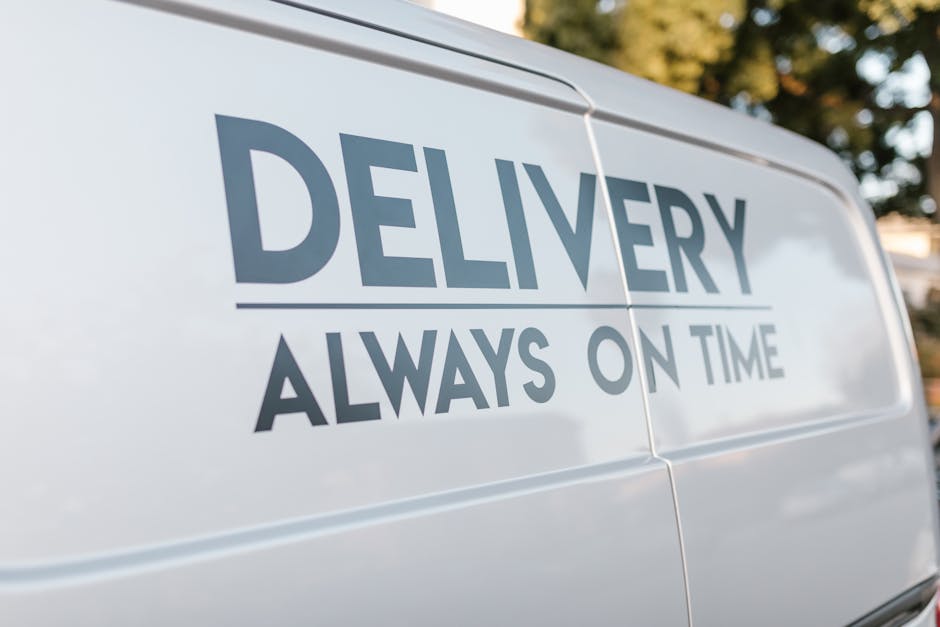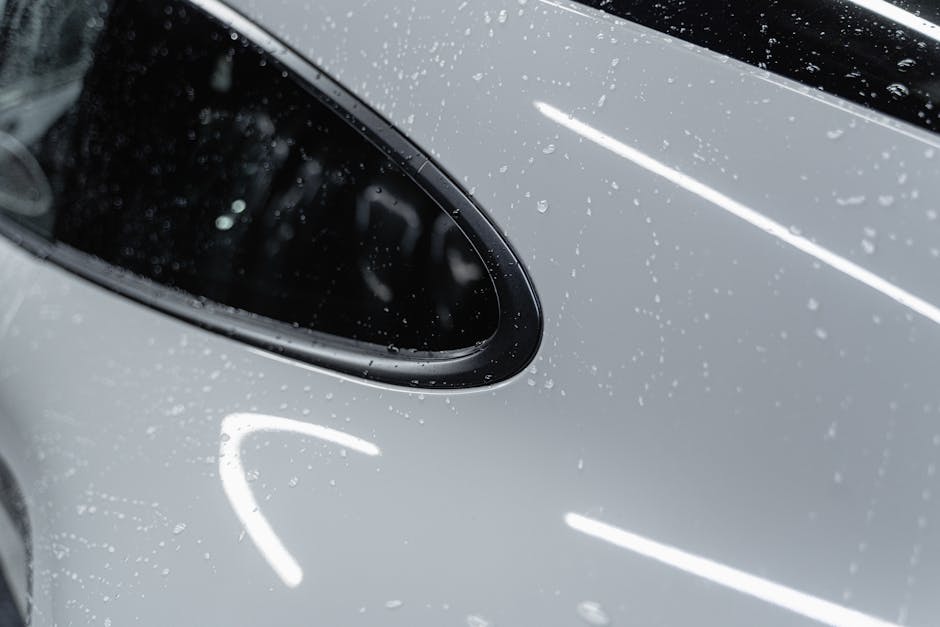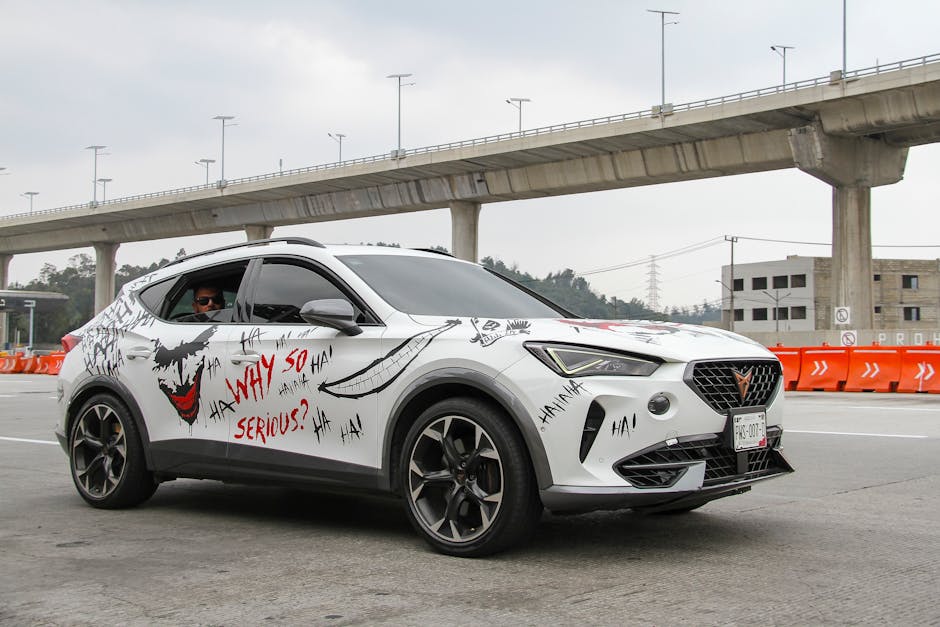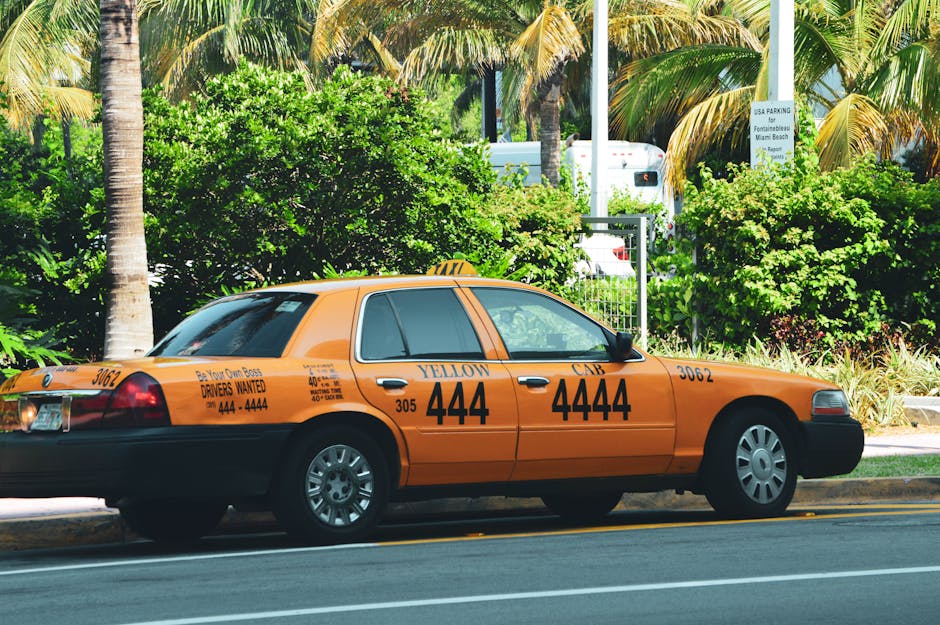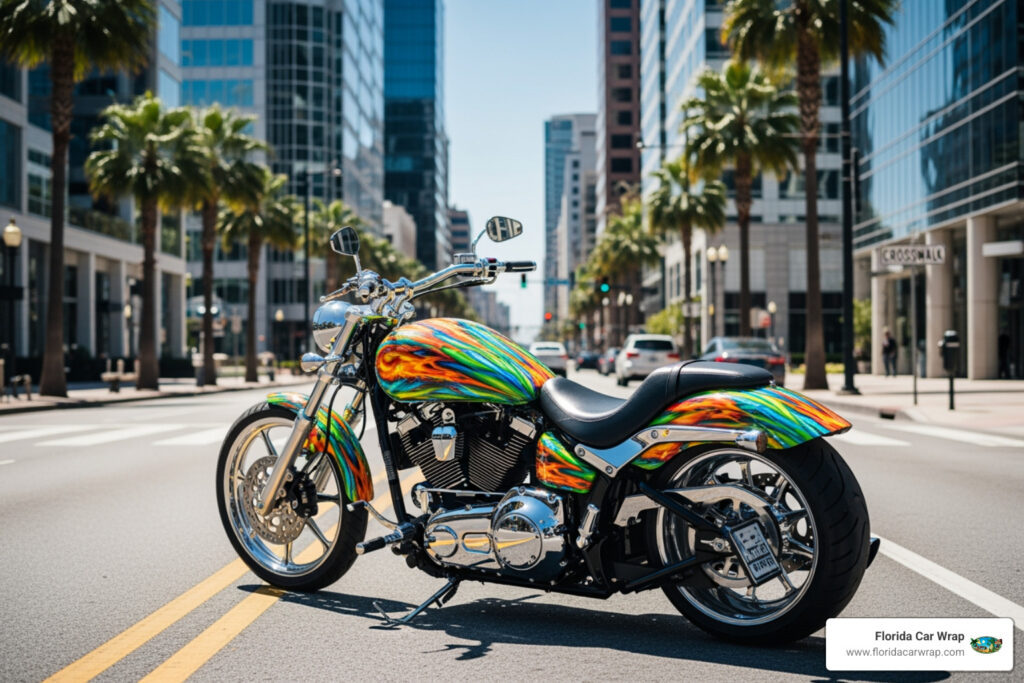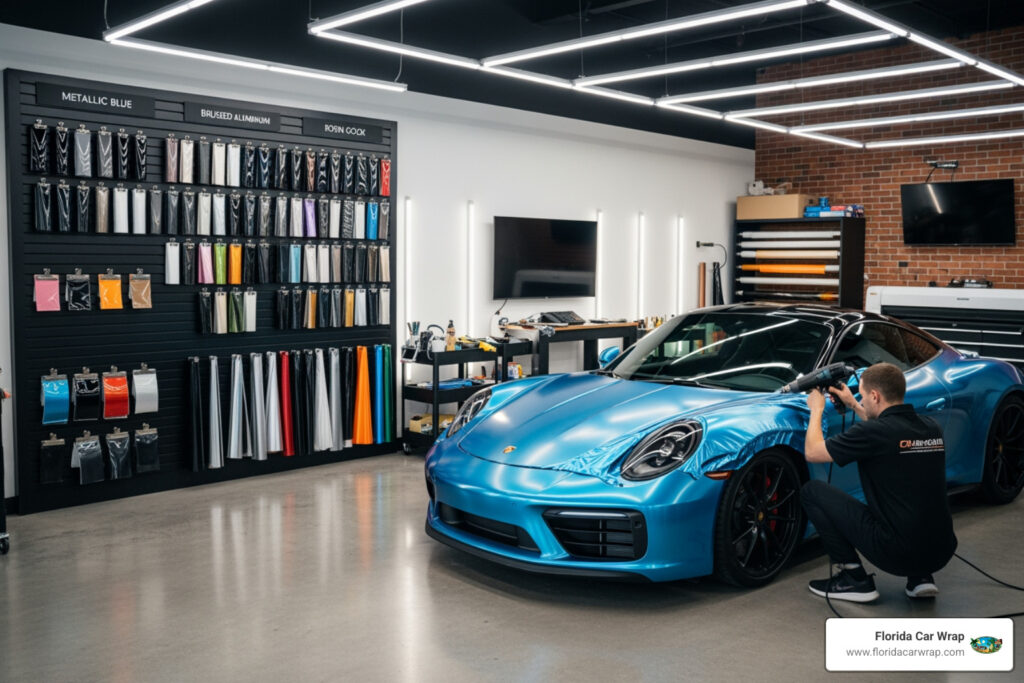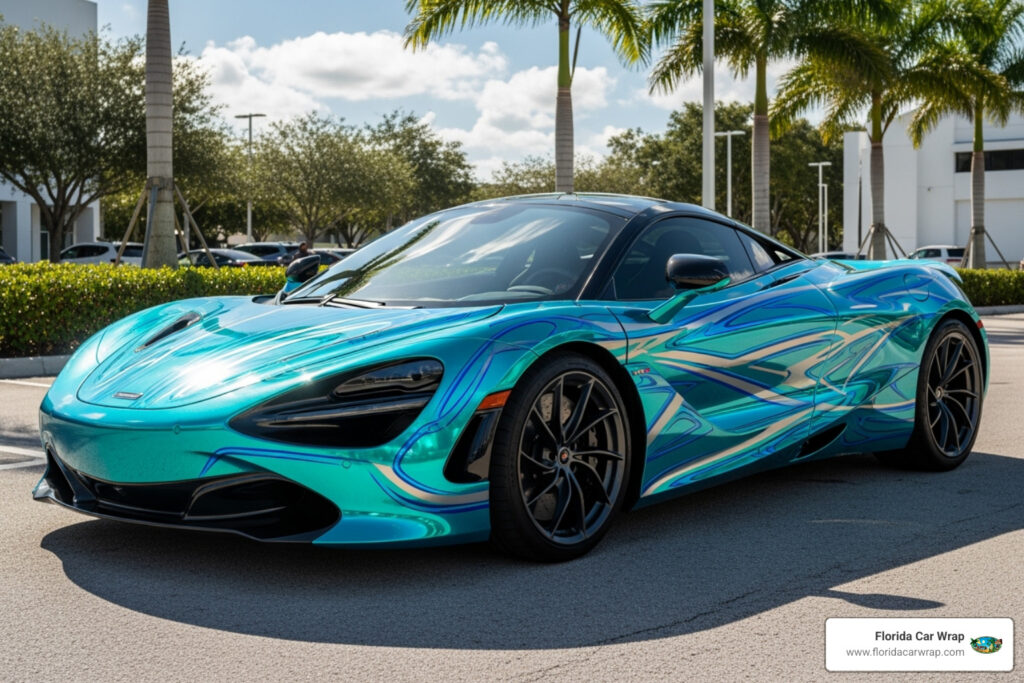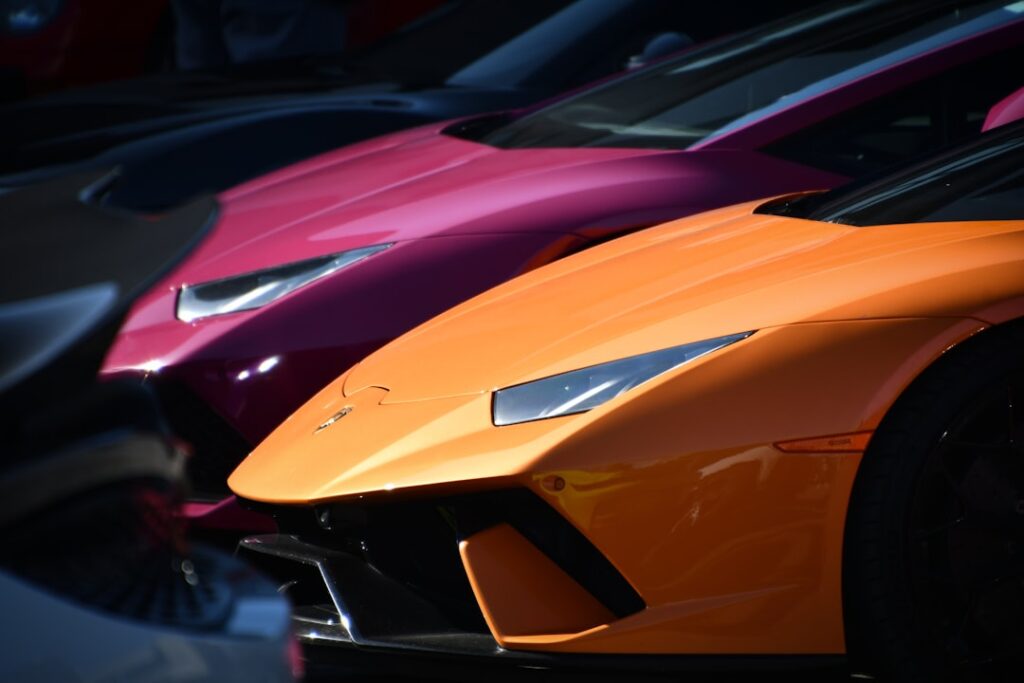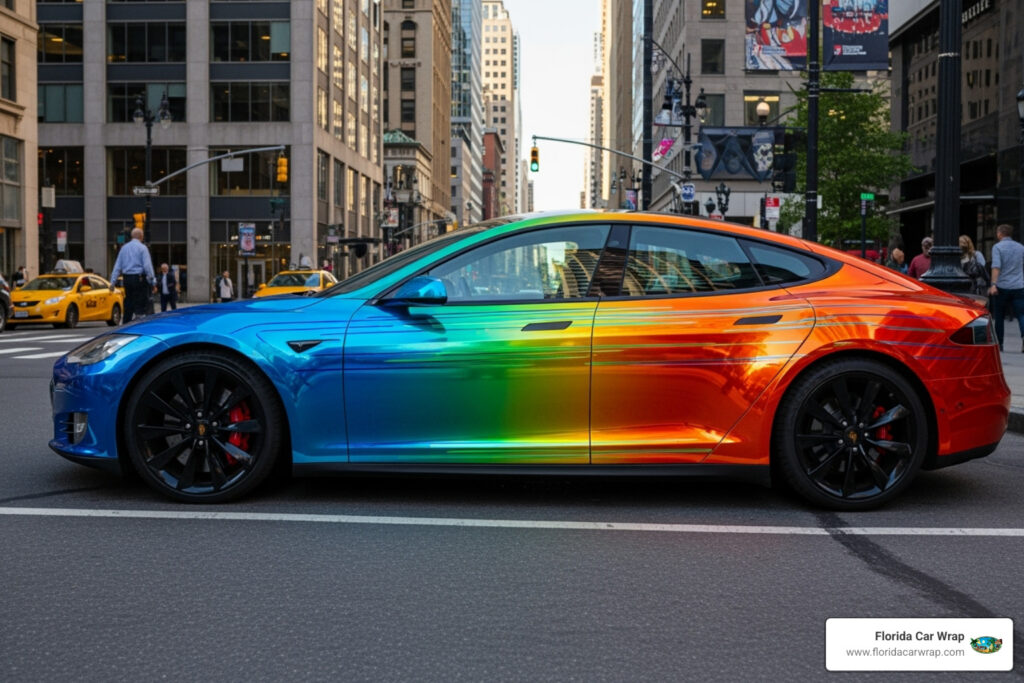Rethinking Your Ride: The Vinyl Wrap Revolution
If you’re considering a motorcycle makeover, motorbike vinyl wrap offers a compelling alternative to traditional paint. Here’s what you need to know about choosing between vinyl wrap and paint:
| Comparison | Vinyl Wrap | Traditional Paint |
|---|---|---|
| Cost | $400-1,000 (full wrap) | $1,000-3,000 (quality paint) |
| Installation Time | Hours (1-2 days) | Days to weeks |
| Durability | 5+ years with proper care | 5-10 years with proper care |
| Customization | 200+ colors/finishes | Limited by paint options |
| Reversibility | Yes, removes without damage | No, permanent change |
| DIY Friendly | Yes, with patience | No, requires professional skills |
Standing at the crossroads of customization, you’re faced with a classic dilemma: commit to paint, or explore the increasingly popular world of vinyl wrapping? As a rider myself, I understand that your motorcycle isn’t just transportation—it’s an extension of your identity.
The traditional route of custom paint has dominated motorcycle culture for decades. But times are changing. With advancements in vinyl technology, riders now have a versatile, affordable option that’s upending the customization game.
“After falling off my chair in shock at the cost of a professional paint job, I decided that vinyl wrapping couldn’t be that hard—right?” shares one DIY enthusiast who successfully wrapped her own motorcycle. This sentiment echoes across riding communities as more enthusiasts find that high-quality vinyl wraps can cost as little as one-third the price of premium paint jobs.
Beyond cost, vinyl wrapping offers something paint simply can’t: freedom to change your mind. Unlike the permanence of paint, vinyl can be removed without damaging your bike’s original finish—preserving resale value while allowing you to experiment with your style.
Is vinyl wrapping right for your motorbike? We’ll cut through the marketing hype and examine the real pros and cons of both options, helping you make an informed decision that balances aesthetics, protection, and budget.
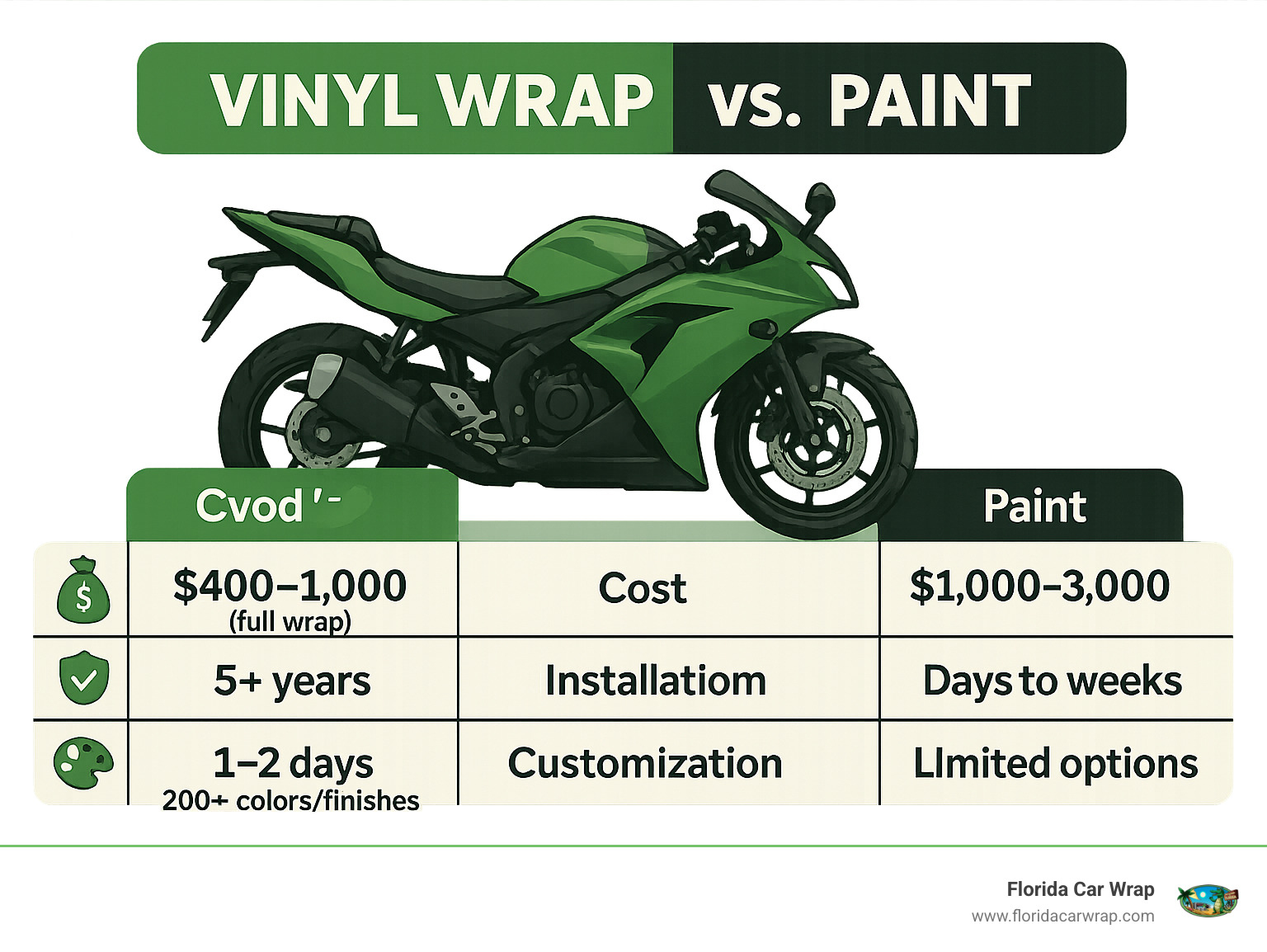
Learn more about motorbike vinyl wrap:
– bicycle wrap kits
– wrap shops near me
The Classic Paint Route: Pros, Cons, Realities
There’s something magical about a freshly painted motorcycle gleaming in the sunlight. That deep, lustrous finish has been the gold standard for decades, turning heads and winning shows. But before you commit to traditional paint, let’s take an honest look at what you’re really signing up for.
When done right, a quality paint job transforms your bike with exceptional depth that seems to go on forever. Factory colors are carefully formulated for each model, and those clear coats create that wet-look finish that makes enthusiasts weak in the knees. Paint becomes one with your motorcycle—not just something sitting on top.
“A properly painted motorcycle tells a story through its finish,” says Steve Hargittai, owner of Florida Car Wrap. “There’s a reason paint has remained popular for so long—it becomes part of the bike’s identity.”
But reality check: repainting your pride and joy means surrendering it to the body shop for days or even weeks. The process isn’t quick—stripping the old finish, priming, multiple paint coats, clear coating, with necessary curing time between each step. Patience isn’t just a virtue here; it’s a requirement.
Your wallet will notice too. Industry data shows a premium motorcycle paint job typically starts around $1,500, with custom work easily pushing north of $3,000. For collectors or those planning a long-term relationship with their bike, this investment makes sense—but it’s a substantial commitment for weekend warriors.
Environmental considerations also deserve attention. Traditional automotive paints release volatile organic compounds (VOCs) that contribute to air pollution. While low-VOC options exist, they often come with higher price tags and sometimes don’t match the durability of conventional formulations.
Why Some Riders Still Repaint
Despite these challenges, many enthusiasts choose paint for compelling reasons:
Tradition and authenticity matter enormously for vintage motorcycles. Period-correct paint maintains historical accuracy and preserves collector value in ways alternatives simply can’t match.
Color-matching repairs become infinitely easier with paint. When your bike takes a spill, paint allows for precise matching to existing panels—something particularly important for factory colors with unique pigments.
Show-quality finish remains the domain of professional paint. For those competing in shows or building concours-level restorations, the best depth and luster of a professional paint job still reigns supreme.
Permanence appeals to many riders. Unlike temporary solutions, a quality paint job can last your motorcycle’s lifetime with proper care—becoming part of its ongoing story.
Hidden Downsides of Wet Paint
What many riders don’t fully consider are the long-term implications that come after the painting is complete:
Even after your bike returns home, a fresh paint job needs weeks to fully cure and harden. During this extended cure time, your beautiful new finish remains vulnerable to damage from simple things like rain or even enthusiastic polishing.
When (not if) your paint chips or scratches, repairs often require high labor fees and blending into surrounding areas for an invisible fix—a process best left to professionals and rarely inexpensive.
While paint delivers stunning colors, it struggles with textures. Want carbon fiber look, brushed metal, or perfect matte finishes? Paint requires specialized (and expensive) techniques with limited texture options compared to alternatives.
Perhaps most importantly, painting represents a permanent decision. Once you paint your motorcycle, returning to the original finish requires another complete repaint—there’s no “undo” button.
And don’t forget about resale considerations. That neon green flame job might speak to your soul, but non-standard colors can significantly limit your bike’s appeal to potential buyers down the road.
These limitations have many riders looking for more flexible options that don’t sacrifice style—which is precisely where motorbike vinyl wrap enters the picture as a compelling alternative worth serious consideration.
Motorbike Vinyl Wrap: A Second Skin Revolution
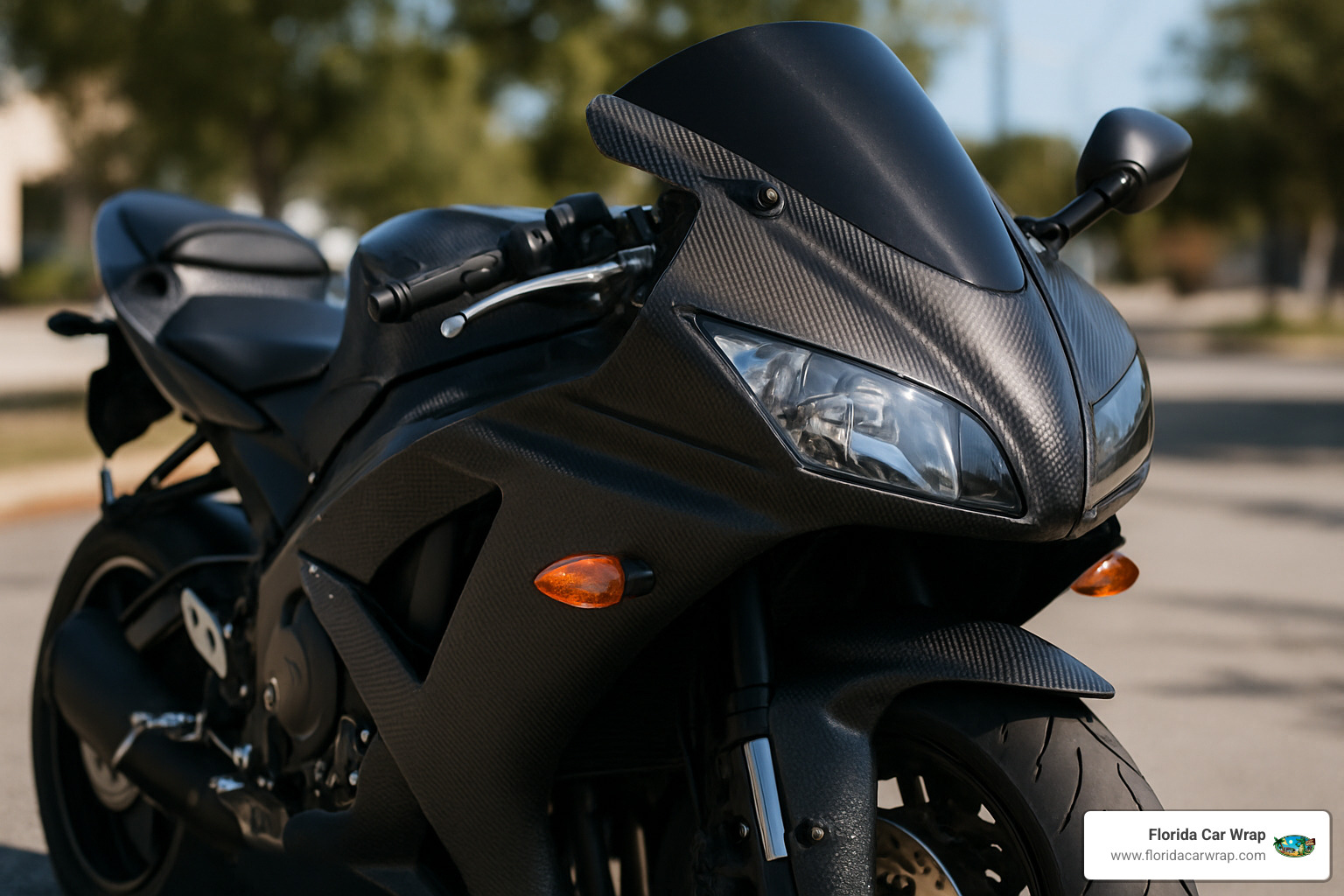
Remember peeling stickers as a kid? Motorbike vinyl wrap works on the same principle, but with seriously upgraded technology. Think of it as a high-tech second skin for your bike – a sheet of pressure-sensitive vinyl that hugs every curve and contour without permanently bonding to the surface beneath.
“A vinyl motorcycle wrap is like giving your bike a new outfit rather than a tattoo,” as one of our clients at Florida Car Wrap put it. You can change it when your style evolves, without the commitment of paint.
Today’s motorcycle wraps are engineering marvels, far removed from the flimsy decals of yesteryear. Modern vinyl features air-release channels that push bubbles away as you apply it, adhesives that activate only with pressure (letting you reposition during installation), and UV-resistant layers that keep colors vibrant for years. Some premium films even have self-healing properties – run your finger over a light scratch with a bit of heat, and watch it disappear like magic.
The customization possibilities feel almost endless. With over 200 colors and finishes available, you can transform your bike from showroom stock to head-turning custom in a single weekend. Want the look of carbon fiber without the weight (or cost)? There’s a wrap for that. Dreaming of a color-shifting finish that changes hue as you ride past? Vinyl can do that too.
For the environmentally conscious rider, motorbike vinyl wrap eliminates the solvents and emissions that come with traditional painting. And instead of leaving your bike at the shop for weeks, a professional wrap installation typically takes just hours, getting you back on the road faster.
Types of Motorbike Vinyl Wrap
Your vinyl journey starts with deciding how much of your bike to transform. Full wraps change everything, creating a complete change that protects your original paint from head to taillight. Partial wraps focus on specific panels – maybe just the tank and fairings – creating accent colors or two-tone designs that can dramatically change your bike’s personality without wrapping every inch.
For riders wanting something more subtle, decals and graphics let you add personal touches while maintaining most of the original look. And if you’re really looking to stand out, custom printed wraps can showcase anything from photorealistic flames to your favorite artwork or sponsor logos.
The finish you choose speaks volumes about your style. Gloss finishes mimic traditional paint with a high shine that reflects light beautifully. If you’re tired of the mainstream, matte finishes offer a sophisticated, non-reflective surface that’s become increasingly popular among custom builders. Satin splits the difference, with a subtle sheen that’s neither too shiny nor too flat.
For those who want their bike to sparkle in the sun, metallic wraps contain tiny metal flakes that catch the light. Carbon fiber wraps recreate that distinctive woven pattern without the astronomical price tag of the real thing. And if you’re feeling particularly bold, chrome wraps turn parts of your bike into moving mirrors.
Lifespan of a Motorbike Vinyl Wrap
“But how long will it last?” That’s usually the first question riders ask, and it’s a fair one. The good news: high-quality motorbike vinyl wrap from trusted brands can look fantastic for up to 5 years or more with proper care.
Several factors influence longevity. First, material quality matters enormously – premium brands like 3M and Avery Dennison (the ones we use at Florida Car Wrap) simply outperform budget alternatives. The installation quality makes a huge difference too; properly heat-set vinyl with carefully wrapped edges resists lifting and peeling far longer than rushed jobs.
Your riding environment plays a role as well. Bikes stored indoors or under covers avoid the constant UV exposure that gradually breaks down even the best vinyl. Regular cleaning with appropriate products (gentle soap, not harsh chemicals) keeps your wrap looking fresh. And naturally, if you’re frequently taking your wrapped sport bike to track days or riding off-road, expect more wear than a weekend cruiser.
There’s a hidden benefit here too – while your wrap is showing off your style, it’s also taking the abuse that would otherwise hit your factory paint. Many riders find their original finish looks surprisingly pristine when they eventually remove the wrap.
Extra Benefits Riders Love
Beyond the obvious style upgrade, motorbike vinyl wrap offers practical advantages that make it more than just a cosmetic choice.
Think of vinyl as a sacrificial shield for your paint. Road debris, minor scratches, and UV rays attack the wrap instead of your factory finish. And if a section gets damaged? You can replace just that panel rather than rewrapping the entire bike – try doing that with paint!
Your bike’s resale value gets protection too. While custom paint jobs can limit your potential buyer pool (not everyone loves neon green), a wrap can be removed to reveal factory-fresh paint underneath when it’s time to sell. Many riders find this preservation of the original finish actually increases their bike’s value.
For those using their motorcycles in business, wraps offer removable advertising space without permanently altering the bike. And for the indecisive among us, wraps provide the freedom to experiment with bold colors or designs without commitment – bored with blue? Switch to red next season.
As one satisfied Florida Car Wrap customer told us, “Wrapping my bike wasn’t just about looking different – it was about protecting my investment while expressing my style.” We couldn’t have said it better ourselves.
Learn more about benefits of a car wrap (the same principles apply to motorcycles) or find Motorcycle Wrapping Near Me to start your change journey.
Head-to-Head: Cost, Durability & Style
Let’s get real about what matters most when choosing between paint and motorbike vinyl wrap. As someone who’s seen countless riders grapple with this decision, I want to break down the honest comparison:
| Factor | Paint | Vinyl Wrap |
|---|---|---|
| Average Cost | $1,000-3,000 | $400-1,000 |
| DIY Potential | Low (requires specialized equipment) | Moderate to High (kits start at $60.77) |
| Installation Time | 1-2 weeks | 1-2 days |
| Color Options | Limited by paint systems | 200+ colors and finishes |
| Texture Options | Limited (mostly gloss) | Extensive (matte, carbon fiber, metallic, etc.) |
| Repair Ease | Difficult (requires color matching) | Easy (replace sections as needed) |
| Reversibility | None (permanent) | Complete (removable) |
| Environmental Impact | High (VOCs and solvents) | Lower (no spray emissions) |
| UV Resistance | Good (with quality clear coat) | Excellent (engineered for outdoor use) |
| Scratch Resistance | Moderate | High (self-healing in premium films) |
Your wallet will definitely feel the difference between these options. Industry reports show that a premium motorbike vinyl wrap typically costs about one-third of what you’d pay for a high-quality paint job. For riders watching their budget, that savings of up to $1,000 (especially if you go the DIY route) is nothing to sneeze at. That’s real money that could go toward performance upgrades or your next riding trip.
Time is another huge factor. Who wants their bike sitting in a shop for weeks? With vinyl, you’ll be back on the road in days, not weeks. Most wraps can be completed in a single weekend, compared to the extended timeline painting requires. As one of our customers recently told me, “I dropped off my bike on Friday and was turning heads by Sunday afternoon.”
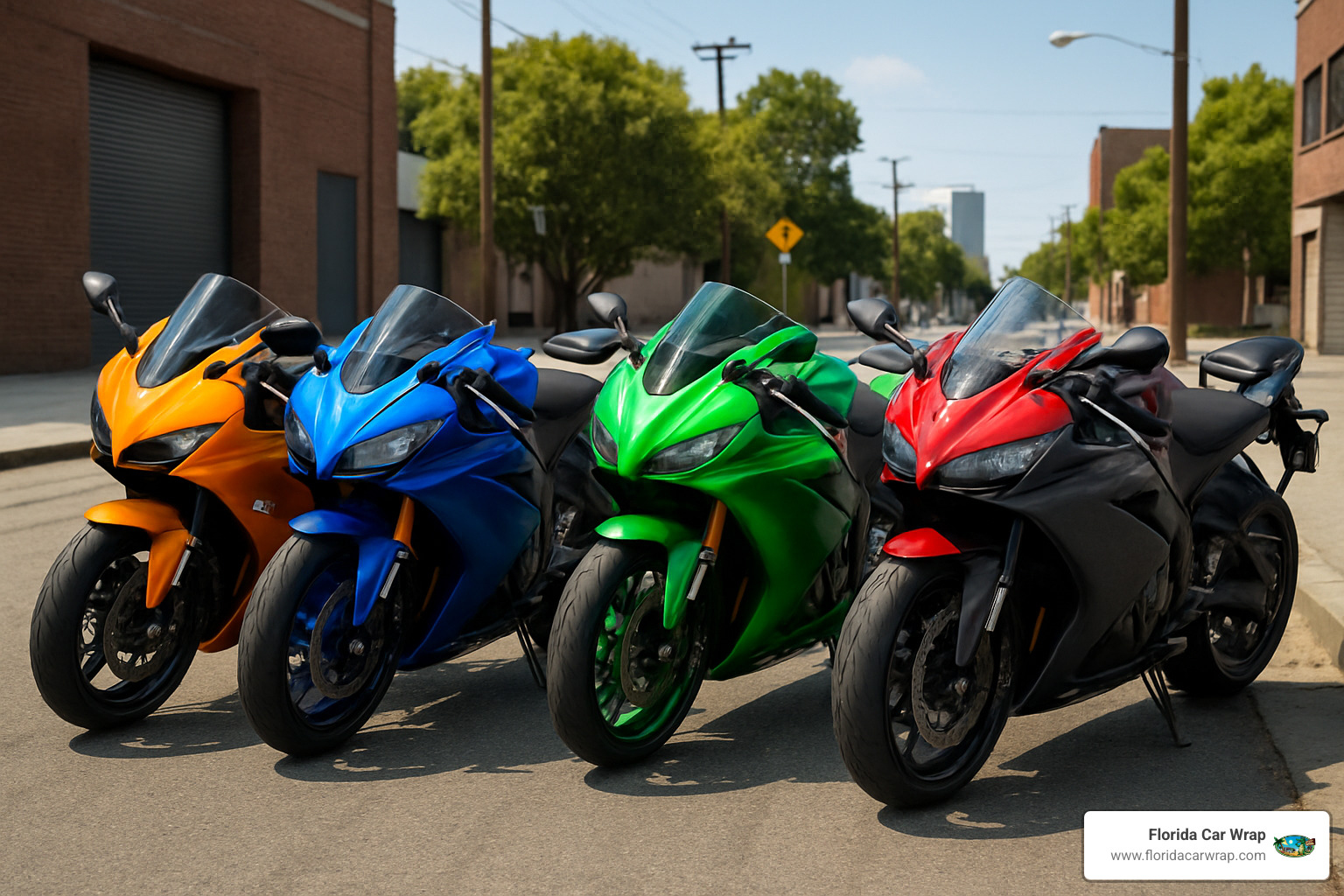
When it comes to creative expression, vinyl simply offers more possibilities. Want your bike to look like it’s carved from carbon fiber? Done. Dreaming of a color-shifting finish that changes from purple to blue depending on the angle? No problem. These effects would cost thousands in custom paint but come standard with vinyl options. The creative freedom is best, especially for riders who like to refresh their look regularly.
The environmental angle shouldn’t be overlooked either. If you care about reducing your carbon footprint (and who doesn’t these days?), vinyl is the clearer choice. Traditional painting processes release significant VOCs (Volatile Organic Compounds) into the air, while vinyl application is virtually emission-free. It’s a small change that makes a real difference.
Quality concerns? I get it. At Florida Car Wrap, we only use premium vinyl from manufacturers like 3M and Avery Dennison that stand behind their products with solid warranties. These aren’t your grandfather’s vinyl stickers – modern automotive vinyl is engineered to withstand highway speeds, intense sun, and regular washing.
Speaking of sun, our South Florida location gives us unique insight into how both paint and vinyl perform in extreme conditions. After years of experience, we’ve found that quality vinyl holds up remarkably well, even under our relentless sunshine. We’ve seen bikes wrapped five years ago that still look fresh because they used premium materials properly installed.
For riders who want protection without commitment, motorbike vinyl wrap offers the perfect balance. You get to experiment with bold styles while actually preserving your bike’s original paint underneath – something traditional paint simply can’t offer.
Want to see how your bike would look with a vinyl makeover? Check out our Motorcycle Wrapping Near Me service to explore your options with experts who understand both the technical and aesthetic aspects of motorcycle wrapping.
Installation, Care & Common Mistakes
The journey to a stunning motorbike vinyl wrap doesn’t end with purchase—proper installation and maintenance are what truly bring your vision to life. Whether you’re a DIY enthusiast or seeking professional help, understanding these elements ensures your wrap looks amazing for years to come.
Good installation begins with thorough preparation. Your motorcycle’s surface needs to be spotlessly clean—first with soap and water, then degreased with isopropyl alcohol to remove any invisible residues that could prevent the vinyl from adhering properly.
“I learned the hard way that rushing through prep is a recipe for disaster,” shares one rider who now proudly sports a flawless carbon fiber wrap. “Spending that extra hour cleaning saved me days of frustration later.”
Most installations benefit from some level of disassembly. Removing mirrors, seats, and sometimes fairings creates cleaner edges and better coverage. For complex curves, many professionals create paper templates first to ensure proper vinyl sizing before cutting their premium materials.
The actual application requires patience and precision. After removing the backing, the vinyl is carefully applied using a squeegee, working from the center outward to prevent those dreaded air bubbles. A heat gun helps the vinyl conform to curves and complex shapes—this heat-forming step is crucial for lasting results. After trimming excess material, a final post-heating activates the adhesive fully and sets the vinyl’s “memory” to your bike’s unique contours.
The right tools make all the difference: a quality heat gun, felt-edge squeegees in various sizes, precision cutting tools, microfiber cloths, and high-percentage isopropyl alcohol are must-haves. Working in comfortable temperatures between 60–80°F keeps the vinyl pliable yet stable for accurate application.
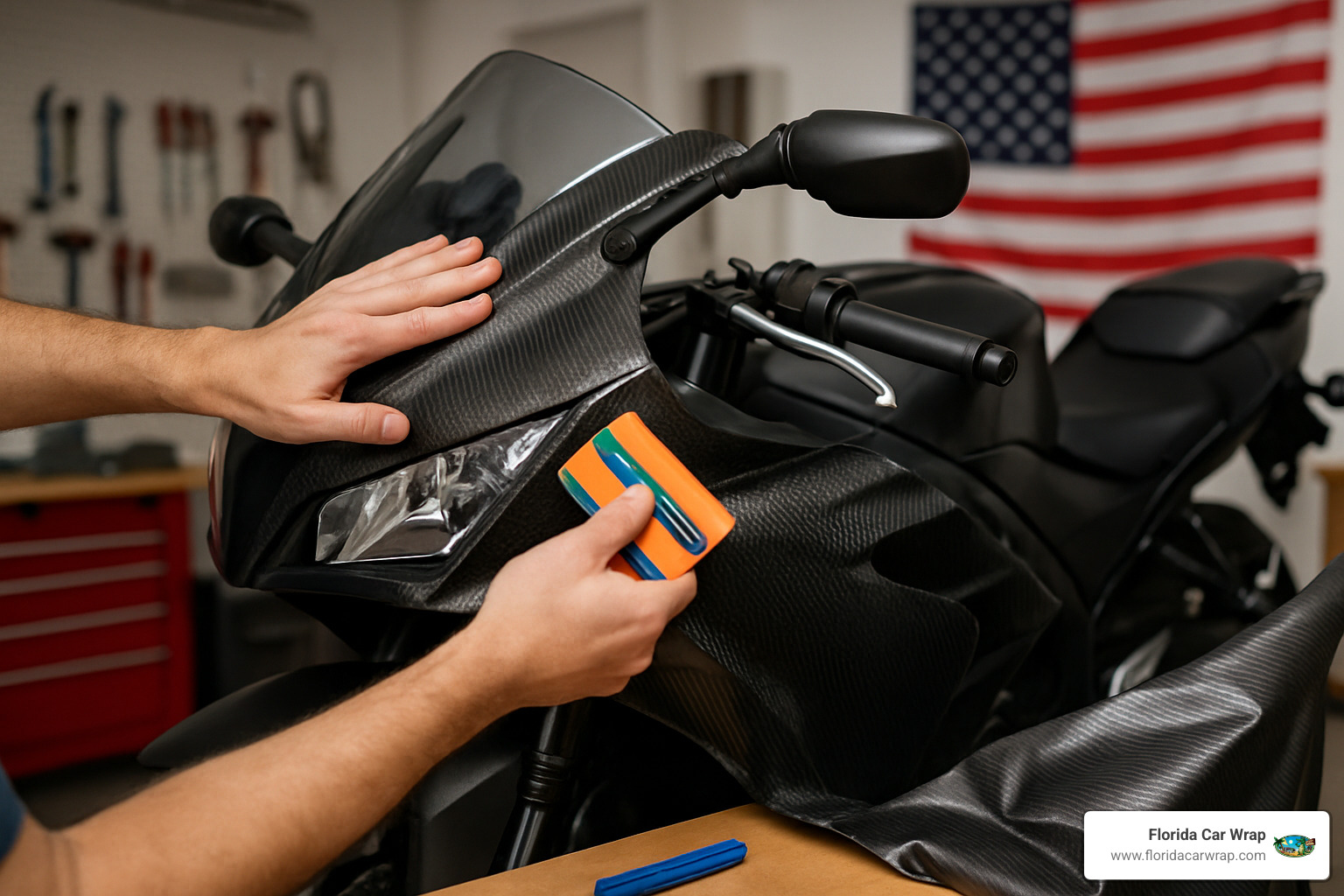
DIY vs Pro: Who Should Tackle a Wrap?
The temptation to DIY is strong, especially when looking at potential savings. But is wrapping your own motorcycle the right choice?
DIY wrapping works best if you’re mechanically inclined and blessed with patience. It’s ideal for riders willing to invest in proper tools and who enjoy detailed work. Starting with simpler body shapes or just doing accent pieces can build confidence before tackling a full wrap.
Professional installation makes more sense for complex motorcycle designs with intricate curves and tight corners. If you own a premium bike where perfection is non-negotiable, or if your time is more valuable than the cost savings, professional help is worth every penny. Custom printed wraps and complex patterns also benefit from experienced hands.
“I spent three weekends trying to perfect my DIY wrap,” admits one rider. “In the end, I took it to professionals who finished it in hours—and it looked ten times better.”
At Florida Car Wrap, we’ve rescued many DIY projects gone wrong. Our owner Steve Hargittai brings over 20 years of professional experience to every installation. As a 3M certified shop, our team has been extensively trained on proper techniques, ensuring flawless results even on the most challenging motorcycle surfaces.
Caring for Your Fresh Finish
Your motorbike vinyl wrap will reward proper care with years of head-turning good looks. Regular cleaning is essential—weekly washing with warm water and mild soap prevents dirt buildup that can damage the vinyl over time. Use a soft brush or microfiber cloth, and avoid pressure washers that can lift edges and force water underneath the wrap.
Choose your cleaning products wisely. Cleaners specifically formulated for vinyl wraps or gentle automotive wash solutions are your best bet. Stay away from petroleum-based products, harsh solvents, or waxes containing abrasives that can dull or damage the finish.
Sun protection is crucial for longevity. “My first wrap lasted nearly seven years because I always parked in the garage,” shares a long-time vinyl enthusiast. “My riding buddy’s identical wrap barely made it to four years sitting outside in the Florida sun.” When possible, store your wrapped motorcycle out of direct sunlight, and consider a breathable cover for long-term protection.
Address any small issues immediately. Lifting edges or tiny tears can often be fixed with careful heat application, preventing them from becoming larger problems. If you store your bike for winter, give it a thorough cleaning first and use a breathable cover that won’t trap moisture against the wrap.
For our South Florida riders, our unique climate demands extra attention. The combination of intense UV rays and salt air near coastal areas means more frequent cleaning and additional UV protection measures are necessary to maintain your wrap’s vibrant appearance.
Common Wrap Blunders to Avoid
Even seasoned installers make mistakes—knowing the common pitfalls helps you avoid them:
Wrapping over imperfections is like putting a tablecloth over a pile of rocks—everything shows through. Vinyl conforms precisely to whatever surface lies beneath, so fix dents, scratches, and rust before wrapping.
Skipping proper cleaning is perhaps the most common error. That nearly invisible fingerprint or wax residue will become glaringly obvious when it creates a bubble or prevents adhesion.
Cold-weather installation fights against physics. Vinyl becomes stiff and unforgiving in cold temperatures, making it nearly impossible to stretch and conform properly around complex motorcycle curves. “My garage thermometer read 55°F, and I thought ‘close enough’—big mistake,” recalls one DIYer. “The vinyl kept snapping back instead of conforming to my tank curves.”
Excessive stretching might solve immediate installation challenges but creates future failures as the material struggles to return to its original shape. Proper technique uses just enough stretch to conform without stressing the material.
Neglecting post-heating is like forgetting to set your cake—this crucial step activates the adhesive fully and locks the vinyl’s memory to your motorcycle’s unique shape.
Improper cutting directly on your paint can leave permanent marks if you later remove the vinyl. Always use appropriate cutting techniques that protect the underlying surface.
Rushing the process almost guarantees disappointment. “Patience and precision are key to achieving a professional finish,” as one experienced wrapper puts it. Quality installation takes time—plan accordingly.
For those ready to dive deeper, detailed how-to resources like step-by-step tutorials and The Girl on a Bike tutorial provide valuable guidance before you begin.
If professional installation seems more appealing after considering these factors, our team at Florida Car Wrap offers expert 3M Vinyl Wrap Installers – FCW services to ensure your motorbike vinyl wrap looks stunning from day one.
Conclusion
After weighing all factors, motorbike vinyl wrap emerges as a compelling option for many riders seeking customization without commitment. Its combination of affordability, versatility, and reversibility addresses many of the drawbacks associated with traditional paint.
That said, paint remains the gold standard for certain applications—particularly for show bikes, vintage restorations, or riders planning to keep the same look for many years. The depth and integration of quality paint simply can’t be matched by any surface application.
Your decision ultimately depends on your priorities:
- If budget, flexibility, and protection of original paint are top concerns, vinyl wrapping offers clear advantages.
- If you’re seeking the absolute best finish quality regardless of cost and permanence, paint remains the premium choice.
At Florida Car Wrap, we’ve seen hundreds of riders transform their bikes through vinyl wrapping. We understand the excitement of seeing your motorcycle take on a completely new personality without the permanence of paint. Our South Florida riders particularly appreciate how quality wraps stand up to our intense sunshine and occasional salt exposure near coastal areas.
Owner Steve Hargittai often tells clients, “Your bike should make you smile every time you walk up to it in a parking lot.” That philosophy drives our approach to every motorcycle wrap project. Steve personally oversees each installation, bringing his 20+ years of experience to ensure your vision becomes reality.
We believe in honest conversations about what works best for your specific situation. Sometimes that means recommending a full custom wrap with intricate designs. Other times, it might be accent pieces that complement your existing paint. And yes, occasionally we’ll even suggest paint when that’s truly the better option for your goals.
“What sets us apart isn’t just technical skill,” Steve explains, “it’s our commitment to clear communication and ongoing support throughout the project. That means you can count on us if there ever is a problem.”
For riders in Davie, Fort Lauderdale, Miami, and throughout South Florida, we invite you to experience the Florida Car Wrap difference. Our 100% client satisfaction guarantee ensures you’ll ride away completely happy with your newly transformed bike.
Whether you choose to wrap or paint, your motorcycle isn’t just transportation—it’s an extension of who you are. It should reflect your personal style while meeting your practical needs and budget.
Ready to explore your options? Contact us to schedule a consultation and see samples of our work. Your dream bike is just a wrap away.





